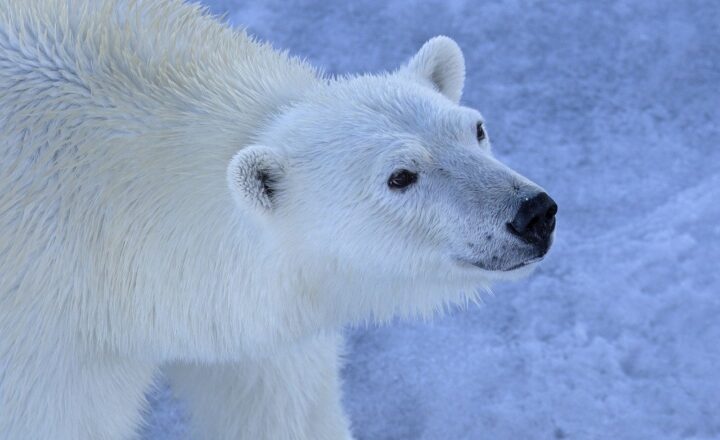The Secrets of Wildlife Conservation: Protecting Our Planet’s Treasures
November 18, 2024

Wildlife conservation is not just a necessity; it’s a moral obligation. As custodians of the Earth, we are charged with the protection and preservation of its irreplaceable beauty, biodiversity, and ecosystems. This article delves into the multifaceted world of wildlife conservation, exploring its importance, methods, and the role we each can play in safeguarding our planet’s treasures.
1. The Importance of Wildlife Conservation
The significance of wildlife conservation extends beyond mere aesthetics. It plays a crucial role in sustaining ecological balance, ensuring human survival, and maintaining a planet capable of supporting all forms of life. Here’s a closer look at why it’s so important:
- Biodiversity Preservation: Biodiversity is essential for ecosystem resilience. A diverse range of species contributes to the health of natural habitats and their ability to adapt to changes such as climate change and human impacts. Every species has a role, and losing even one can have rippling effects throughout the ecosystem.
- Economic Benefits: Healthy ecosystems underpin vital industries, including agriculture, tourism, and fisheries. Wildlife tourism, for example, significantly boosts many countries’ economies. Healthy environments provide clean air and water, contributing positively to human health and productivity.
- Cultural Significance: Many cultures and communities around the world depend on wildlife and natural resources for their identity and way of life. Conserving wildlife helps preserve the heritage of indigenous peoples and local communities whose traditions and cultures are deeply intertwined with their environment.
- Climate Regulation: Wildlife plays a vital role in ecosystem functions such as carbon storage and water filtration. Healthy ecosystems can mitigate the impacts of climate change, protecting us from severe weather events and maintaining essential resources for future generations.
In light of these factors, it becomes increasingly evident that the priority of wildlife conservation is paramount for our survival and for the health of our planet.
2. Threats to Wildlife
Despite the importance of wildlife, numerous threats challenge conservation efforts worldwide:
- Habitat Loss: Urban expansion, deforestation, and agriculture have led to habitat fragmentation and destruction, displacing countless species from their natural environments. As their habitats shrink, species struggle to adapt or survive.
- Pollution: Pollution from agricultural runoff, plastic waste, and industrial byproducts has ravaged the natural environment. Contaminated habitats lead to health issues in wildlife and can decimate populations of sensitive species, altering entire ecosystems.
- Overexploitation: Unsustainable hunting, fishing, and harvesting practices have pushed many species to the brink of extinction. The demand for exotic pets, traditional medicines, and luxury goods drives illegal poaching and trade, making enforcement challenging.
- Invasive Species: Non-native species introduced into environments can outcompete, prey on, or bring diseases to native species, disrupting local ecosystems and leading to declines in indigenous wildlife populations.
- Climate Change: As the world’s climate continues to change, many species face challenges in adapting quickly enough to survive. Shifting habitats, altered food sources, and changing migration patterns further threaten their existence.
Confronting these threats requires urgent action from individuals, communities, and organizations worldwide.
3. Methods of Wildlife Conservation
Implementing conservation strategies entails a holistic approach, integrating scientific knowledge with community involvement and policy change:
Protected Areas
Establishing protected areas or wildlife reserves is one of the most effective ways to preserve biodiversity. These sanctuaries provide safe habitats where wildlife can thrive without human interference. Key protected areas include national parks, marine reserves, and wildlife refuges.
Community-Based Conservation
Empowering local communities includes promoting sustainable land-use practices, eco-tourism, and conservation education. When communities are actively involved in conservation efforts, they are more likely to protect the wildlife and resources on which they depend.
Legislation and Policy Change
Advocating for stronger environmental laws and regulations helps dismantle the structures supporting illegal poaching and habitat destruction. Initiatives like the Endangered Species Act and CITES play crucial roles in safeguarding vulnerable species and their habitats.
Restoration Projects
Restoring degraded habitats, such as wetlands, forests, and grasslands, rehabilitates ecosystems and strengthens their resilience against climate change. These projects can also aid the recovery of endangered species by reintroducing them into restored environments.
Research and Monitoring
Continued research is essential for understanding wildlife needs and risks. Data collection through tracking, tagging, and monitoring helps inform conservation strategies, making them more effective and adaptive.
4. How You Can Make a Difference
Everyone can contribute to wildlife conservation. Here are practical ways individuals can make a meaningful impact:
- Adopt Sustainable Practices: Use eco-friendly products, reduce plastic consumption, and support sustainable brands. These small changes contribute to decreasing pollution and demand for unsustainable resources.
- Support Conservation Organizations: Consider donating or volunteering for wildlife conservation organizations. Your time, efforts, or funds can go a long way in supporting critical projects and initiatives.
- Educate Yourself and Others: Stay informed about conservation issues, and share that knowledge with friends and family. Educating others can create a ripple effect and inspire action within your community.
- Advocate for Wildlife Policies: Use your voice to advocate for stronger environmental laws and practices in your local community. Contact your lawmakers to support wildlife and environmental issues that matter to you.
- Participate in Citizen Science: Join wildlife monitoring programs, report local sightings of species, or engage in habitat restoration projects. Your observations help scientists understand species distribution and health, directly impacting conservation efforts.
Conclusion
Wildlife conservation is critical not only for protecting the Earth’s majestic species but also for sustaining human life. By recognizing the importance of biodiversity, addressing its threats, implementing solid conservation strategies, and understanding the role we each play, we can ensure the survival of our planet’s treasures. Whether through individual actions or collective efforts, every step we take adds to the larger picture of protecting our natural world. Join the movement and become an advocate for conservation today, ensuring that future generations inherit a thriving planet rich in wildlife and natural wonders.






